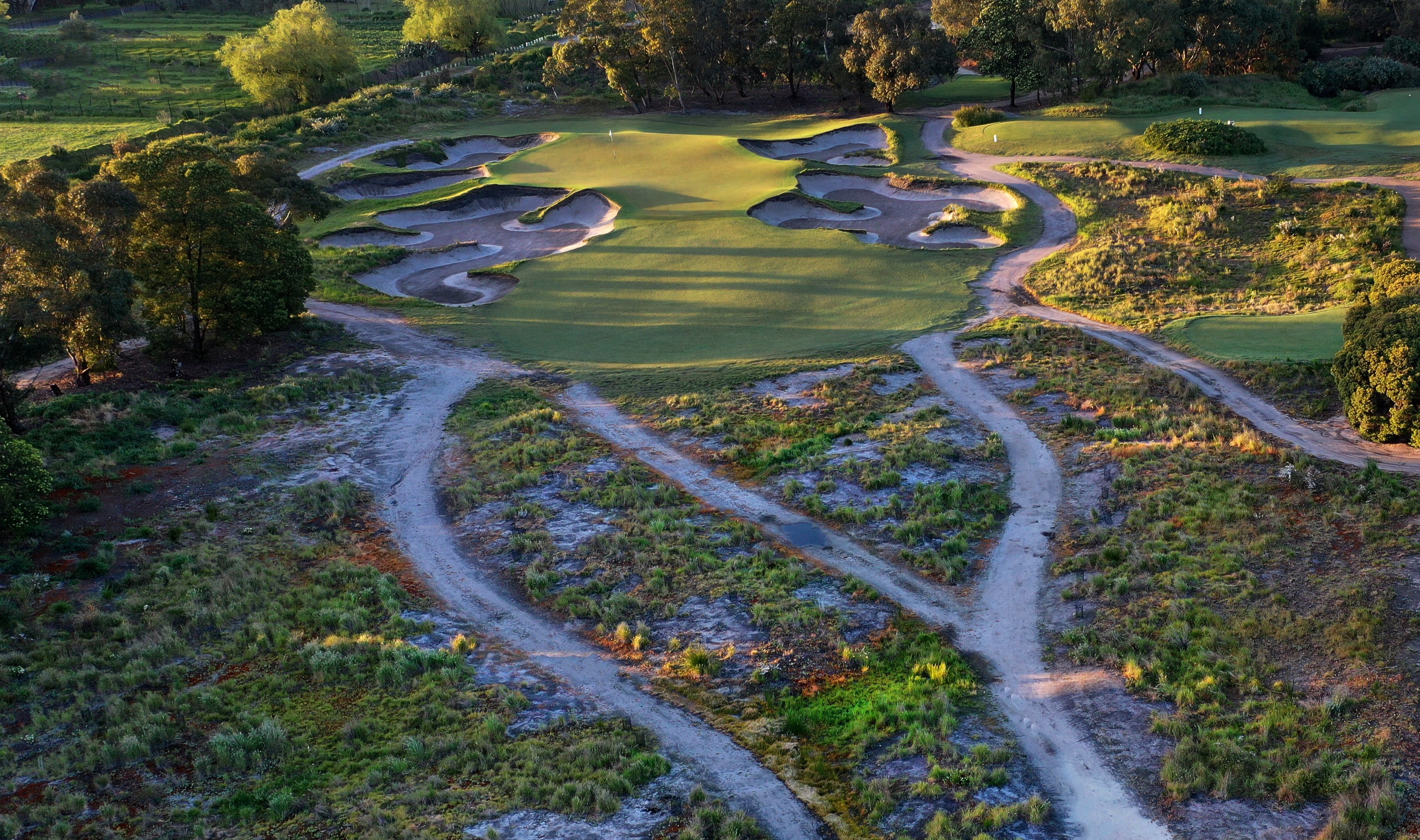13 Feb 2025 | Opinion | Clubs and Facilities |
Clayton: Wither the Sandbelt 2
by Mike Clayton

The most important issue for golf clubs to consider into the 2020s and beyond is not to do with the relationship between tees, fairways, bunkers and greens, but the vegetation surrounding the holes.
Too often, responsible vegetation management and planning is ignored, overwhelmed by concerns as to the state of the playing surfaces, but without planning, consistent observation and management, soon enough the club’s original layout and purpose can be lost.
The background to the evolution of Melbourne’s Sandbelt is fundamental to understanding why such strategic management is often overlooked but should become a priority. Now is the time for Melbourne’s established clubs to develop 30 to 50-year plans for their vegetation, to ensure the vision making them so important is enhanced through those years.

It’s almost a century since Alister MacKenzie sailed to Melbourne, transformed the city’s golf courses, established Australia’s reputation as a serious golfing nation and made Melbourne, along with New York, Philadelphia and London, one of the four great cities of golf architecture of the world.
Without MacKenzie we’d be like South Africa and if you doubt it try and find anything there matching the best 101 courses in Melbourne. Or look at where he didn’t visit and study the poor quality of the architecture.
(1Royal Melbourne East, Royal Melbourne West, Commonwealth, Kingston Heath, Metropolitan, Peninsula North, Peninsula South, Victoria, Woodlands, Yarra Yarra)
There is now more first-class architecture within an hour of Royal Melbourne than the rest of the country combined, a fact underscoring the importance of MacKenzie’s contribution alongside and his local design collaborator, Alex Russell along with Mick Morcom, the Royal Melbourne superintendent who influenced, and built the world-renowned Sandbelt bunkers at Royal Melbourne, Kingston Heath and Victoria.

After MacKenzie sailed for the United States early in 1927, and took on his commissions at Cypress Point, Crystal Downs and Augusta National, one of the biggest decisions local committees had to make was how their courses would be vegetated, and how they would manage that vegetation long into the future. Yarra Yarra and Metropolitan, for example, were virtually treeless sites.
Not to put too fine a point on it, and despite their best intentions, most largely made a mess of it, preferring quick fixes—fast-growing trees, mixed with attractive native – but not indigenous - flora.

Of course, it’s easy in retrospect to see the mistakes this short-sightedness brought, but understanding the extent of those errors in those years is critical in any decisions on where courses go from here.
There was almost no reverence for indigenous eucalypts and only Peninsula’s then-unloved North Course, completed in the mid-1960s, championed the use of existing coastal manna gums.
Likely no one at the club thought much of the vegetation on the club’s "second course", one few had any affection for and thus had very little interest in "improving" it.
Committees looking for "variety" instead imported "natives" from all over Australia no matter how inappropriate they were in Melbourne.
They planted too many trees too close each other with the inevitable result few had the space to develop to their full potential. A common argument supporting this haphazard approach is the mass-planting created hole-by-hole isolation; some members have a deep affection for the result— not being able to see any other hole other than the one they are on. One wonders why, when Pine Valley aside, every other top-100 course in the world champions long views across the course.
‘Ironically, the very same golfers who want to plant a lot of trees or who will fight to keep unnecessary trees around usually happen to be the very same golfers who sit in the locker room playing cards, oblivious to Mr Havercamp and his leathery body walking naked from the showers to his locker. The sight of men who bypass the towel rack and bare all for the world is apparently not offensive? Yet it’s apocalyptic when you can see the threesome over on the 8th fairway while you putt out on the fourth green’. Geoff Shackelford.

Metropolitan imported red flowering gums (Corymbia ficifolia) from the south-west of Western Australia, a result of an existing tree outside what became the clubhouse. That one famous tree—which was finally removed in 2024 after more than 150 years- was the exception proving the rule and most of them planted across the course are dismal imitations of the one which became the club’s logo.
It’s always a mistake to move trees from an environment they’ve adapted to over many thousands of years and expect them to thrive and feel a part of the environment.
Ask any member if their course should “feel natural” and you’ll get 100% affirmation and it’s all but impossible to get members to 100% agree on anything. Despite that, they have little understanding, or interest in the fact there is nothing guaranteed to make a course feel unnatural more than planting it out with non-indigenous vegetation.
Beginning with Kingston Heath in the mid-1980s, the Sandbelt has been in part restored and in part rejuvenated by architects who understood the best version of the Sandbelt was in the decade after its completion and before a series of committees made a series of unwise choices, all made without the long view, and often through personal likes, rather than professional advice.
Almost without exception these alterations were unnecessary, gratuitous even, and took away much of what MacKenzie, Russell, Morcom and son, (Vern, Spring Valley), Sam Berriman, (Huntingdale) J.B. Mackenzie, (Metropolitan) J.D.A. Scott (Woodlands) and Charles Lane and Sam Bennett (Commonwealth) had envisaged and left.
Commonwealth lost its great par-3 seventh hole.
Yarra Yarra blew up Russell’s amazing greens at the sixth and eighth holes.
Metropolitan’s lack of appreciation of the greatness of the "lost eight holes" on the back nine cost it much as the "new" holes on poorer land and soil have never matched the quality of what was lost.
Huntingdale set off down a wretched path to make the golf course more difficult and post -World War II both Victoria and Kingston Heath filled in bunkers and planted both poorly chosen and positioned trees.
Unsurprisingly one of those, a Corymbia maculata (from New South Wales) appeared to the left of the par-4 15th green at Victoria after Jack Nicklaus hit a big hook down onto the far side of the 11th fairway and then holed an incredibly difficult pitch for an eagle. “No one is ever going to do that again,” was the club secretary’s curious attitude to one shot. It’d have been better to put a plaque there but Nicklaus in 1964 wasn’t the Nicklaus he was to become.
Royal Melbourne largely avoided the pitfall of thinking they could improve on the great architecture MacKenzie left and the two significant changes they did make to the West Course—the new seventh hole and moving the 12th green to the left—were triumphant decisions.
Given the Sandbelt has never been in "better form" architecturally where should it be headed and what will it look like long into the future?
The long-term replanting of courses should highlight indigenous coastal manna gums which grow round and squat to stand against the constant battering of the coastal winds coming off the bay.
The ideal study of the combination of coastal manna gums and heathlands is the North Course at Peninsula.

This doesn’t mean clubs should go and tear out all their trees, but responsible, well administered clubs will adopt a 30 to 50-year vision of what their courses will look like and proceed accordingly.
They won’t be dissuaded by what MacKenzie described as recalcitrant members with "a particular affection for the mud-heap on which they play" and who are opposed to all and any change.
It’s better to move on without their consent and remember support for the 1980s alterations to Kingston Heath which transformed the course and catapulted it into the world’s top 30 was far from universal.
Adopting a principle of using indigenous trees makes the committee’s decisions very simple.
The second critical element is the promotion of heathland plants which add much to the texture, look and feel of the golf course. Not to mention their environmental value.
Formerly smothered in ti-tree, (a plant Peter Thomson described in a mid-1980s magazine as a ‘creeping weed’) the area was rejuvenated by long-time superintendent Ian Todd who removed years of unmanaged ti-tree and allowed the beautiful little heathland plants to re-establish and flourish.
Royal Melbourne’s superintendent Richard Forsyth is promoting heathland plantings at Royal Melbourne with great success but not without opposition from those who think ti-tree has a place on the Sandbelt.
Thomson was right when he targeted the plant in the 1980s and although there are parts of the Sandbelt where it’s an appropriate hazard (right of Kingston Heath’s 16 is one of the few examples but it’s hard to think of more than a handful of holes where it’s an important hazard) it’s elimination and replacement is a critical part of the enhancement of the Sandbelt courses.
Sooner rather than later clubs will come to recognise the condition of their golf course is not simply defined by the state of their playing surfaces—the fairways, greens, bunkers and tees.
Rather the true definition of the condition of any golf course is the state of everything inside the boundary fences.
Managing vegetation, including removing, planting and replanting, is an important part of the superintendent’s job but too often one neglected because staff numbers and budgets dictate the prioritising the playing surfaces.
The problem with that thinking is the longer vegetation management is neglected the more overwhelming the task of ‘fixing’ it becomes and too often the result is the proverbial can is kicked down the road.
Nor is it an unreasonable assumption those with no attachment to, or affection for, the game will, at some point be arguing golf courses take up too much space, are bad for the environment and should be repurposed as houses or public land.
The promotion of indigenous trees and heathland plants will make the "anti-golf: attacks much less potent if golf courses single-handedly become the sole preserves of indigenous vegetation in the city.
Join our newsletter
Get weekly updates on news, golf tips and access to partner promotions.
Related News
Aussies on Tour: Ripper GC back on home soil
Where all our Australasian stars are playing across the globe this week.
Clayton: Wither the Sandbelt 2
Columnist Mike Clayton on why the promotion of indigenous vegetation on our golf courses is so important for the game
Red Rocks thriving on the island
It's always been different and bold, and the new owners of Red Rocks Golf are upholding this at the Phillip Island gem.


